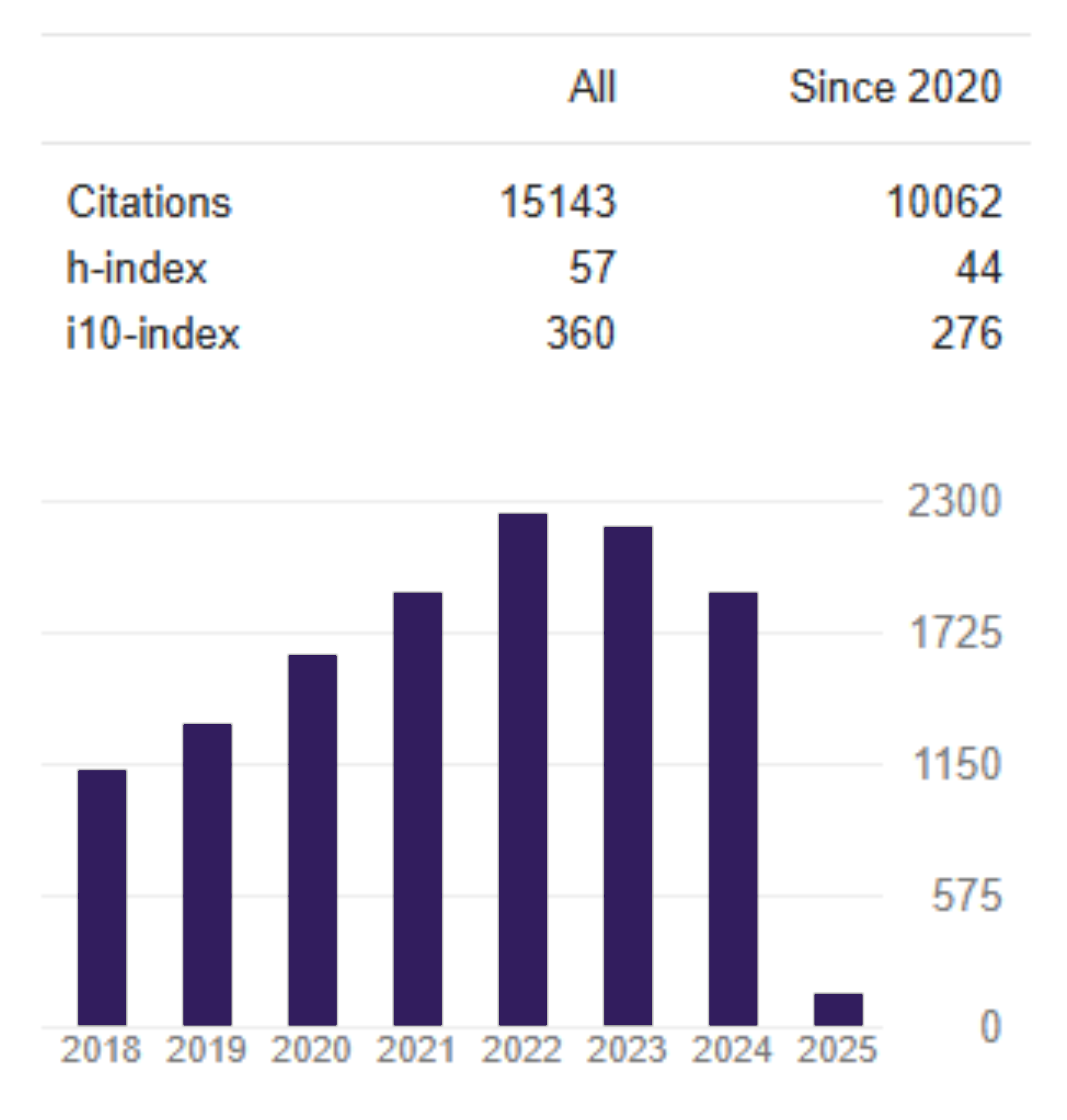The Safety Threshold of Vietnam's Banks During Covid-19
DOI:
https://doi.org/10.26905/jkdp.v25i4.5929Keywords:
Banking stress test, credit risks, COVID-19, capital adequacy ratio, non-performing loans, safety thresholdAbstract
Using the stress test, we measured the Comercial banks' withstand under pressure caused by the outbreak of COVID-19, which led to a freeze of the real estate market, a fall of the stock market, and an increase of non-performing loans (NPLs). The findings show positive and hopeful signs. Even though the real estate and stock markets fell by 40%, resulting in a significant devaluation of the banks' loan collaterals, banks do not need to supplement provisions for credit risk. The high number of NPLs, which lead to increased provisioning, erodes net earnings, reducing the capital adequacy ratio (CAR). Banks can still meet both the 9% minimum CAR requirement and the 3% maximum NPL requirement. The study also identifies the maximum safety threshold of the Vietnamese banking system, which averaged up to a 50% increase in NPLs. Two of the country's top 10 banks are even able to maintain a CAR greater than 9% and an NPL ratio below 3%, although NPLs increase to 450% and 215% compared to these before the shock, respectively.
JEL:Â E50, G21
Downloads
References
Acharya, V. V., Berger, A. N., & Roman, R. A. (2018). Lending implications of U.S. bank stress tests: Costs or benefits? Journal of Financial Intermediation, 34, 58–90. https://doi.org/10.1016/j.jfi.2018.01.004
Başarır, Ç., & Toraman, C. (2014). Financial Stability Analysis in Banking Sector: A Stress Test Method. Muhasebe ve Finansman Dergisi, 129–144. https://doi.org/10.25095/mufad.396463
Baudino, P. (2020). Stress-testing banks during the Covid-19 pandemic. https://www.bis.org/fsi/fsibriefs11.htm
Baudino, P., Goetschmann, R., Henry, J., Taniguchi, K., & Zhu, W. (2018). Stress-testing banks—A comparative analysis. https://www.bis.org/fsi/publ/insights12.htm
Bird, A., Karolyi, S., Ruchti, T., & Sudbury, A. (2015). Bank Regulator Bias and the Efficacy of Stress Test Disclosures. SSRN Electronic Journal. https://doi.org/10.2139/ssrn.2626058
Blaschke, W., Jones, M. T., Majnoni, G., & Peria, M. S. M. (2001). Stress Testing of Financial Systems: An Overview of Issues, Methodologies, and Fsap Experiences. https://doi.org/10.5089/9781451851168.001
Borio, C., & Restoy, F. (2020). Reflections on regulatory responses to the Covid-19 pandemic. https://www.bis.org/fsi/fsibriefs1.htm
Cornett, M. M., Minnick, K., Schorno, P. J., & Tehranian, H. (2020). An examination of bank behavior around Federal Reserve stress tests. Journal of Financial Intermediation, 41, 100789. https://doi.org/10.1016/j.jfi.2018.05.001
Cortés, K. R., Demyanyk, Y., Li, L., Loutskina, E., & Strahan, P. E. (2020). Stress tests and small business lending. Journal of Financial Economics, 136(1), 260–279. https://doi.org/10.1016/j.jfineco.2019.08.008
Covas, F. (2018). Capital Requirements in Supervisory Stress Tests and Their Adverse Impact on Small Business Lending. https://doi.org/10.2139/ssrn.3071917
Fernandes, M., Igan, D., & Pinheiro, M. (2020). March madness in Wall Street: (What) does the market learn from stress tests? Journal of Banking & Finance, 112, 105250. https://doi.org/10.1016/j.jbankfin.2017.11.005
Flannery, M., Hirtle, B., & Kovner, A. (2017). Evaluating the information in the federal reserve stress tests. Journal of Financial Intermediation, 29, 1–18. https://doi.org/10.1016/j.jfi.2016.08.001
Frame, W. S., Gerardi, K. S., & Willen, P. S. (2015). The Failure of supervisory stress testing: Fannie Mae, Freddie Mac, and OFHEO. In Working Papers (No. 15–4; Working Papers). Federal Reserve Bank of Boston. https://ideas.repec.org/p/fip/fedbwp/15-4.html
Genberg, H., Martinez, A., & Salemi, M. K. (2014). The IMF / WEO Forecast Process. https://www .semanticscholar .org/paper/The-IMF-%2F-WEO-Forecast-Process- Genberg-Martinez/f823150b974fe540a9862f7e5e88ac3eb75c15ad
Goldstein, I., & Leitner, Y. (2018). Stress tests and information disclosure. Journal of Economic Theory, 177, 34–69. https://doi.org/10.1016/j.jet.2018.05.013
Ikeda, Y., Kerry, W., Lewrick, U., & Schmieder, C. (2021). Covid-19 and bank resilience: Where do we stand? https://www.bis.org/publ/bisbull44.htm
Judge, K. (2020). Stress Testing During Times of War. Handbook of Financial Stress Testing, J. Doyne Farmer, Alissa Kleinnijenhuis, Til Schuermann & Thom Wetzer, Eds., Cambridge University Press, Forthcoming; European Corporate Governance Institute (ECGI) Law Working Paper No. 529/2020; Columbia University School of Law, The Center for Law & Economic Studies Working Paper No. 622. https://scholarship.law.columbia.edu/faculty_scholarship/2663
Kapinos, P., Martin, C. A., & Mitnik, O. A. (2015). Stress Testing Banks: Whence and Whither? https://doi.org/10.2139/ssrn.2710846
Lewrick, U., Schmieder, C., Sobrun, J., & Takáts, E. (2020). Releasing bank buffers to cushion the crisis—A quantitative assessment. https://www.bis.org/publ/bisbull11.htm
Moretti, M., Stolz, S., & Swinburne, M. (2009). Stress-testing at the IMF. In M. Quagliariello (Ed.), Stress-testing the Banking System: Methodologies and Applications (pp. 297–317). Cambridge University Press. https://doi.org/10.1017/CBO9780511635618.018
Downloads
Additional Files
Published
Issue
Section
License

This work is licensed under a Creative Commons Attribution-ShareAlike 4.0 International License.



